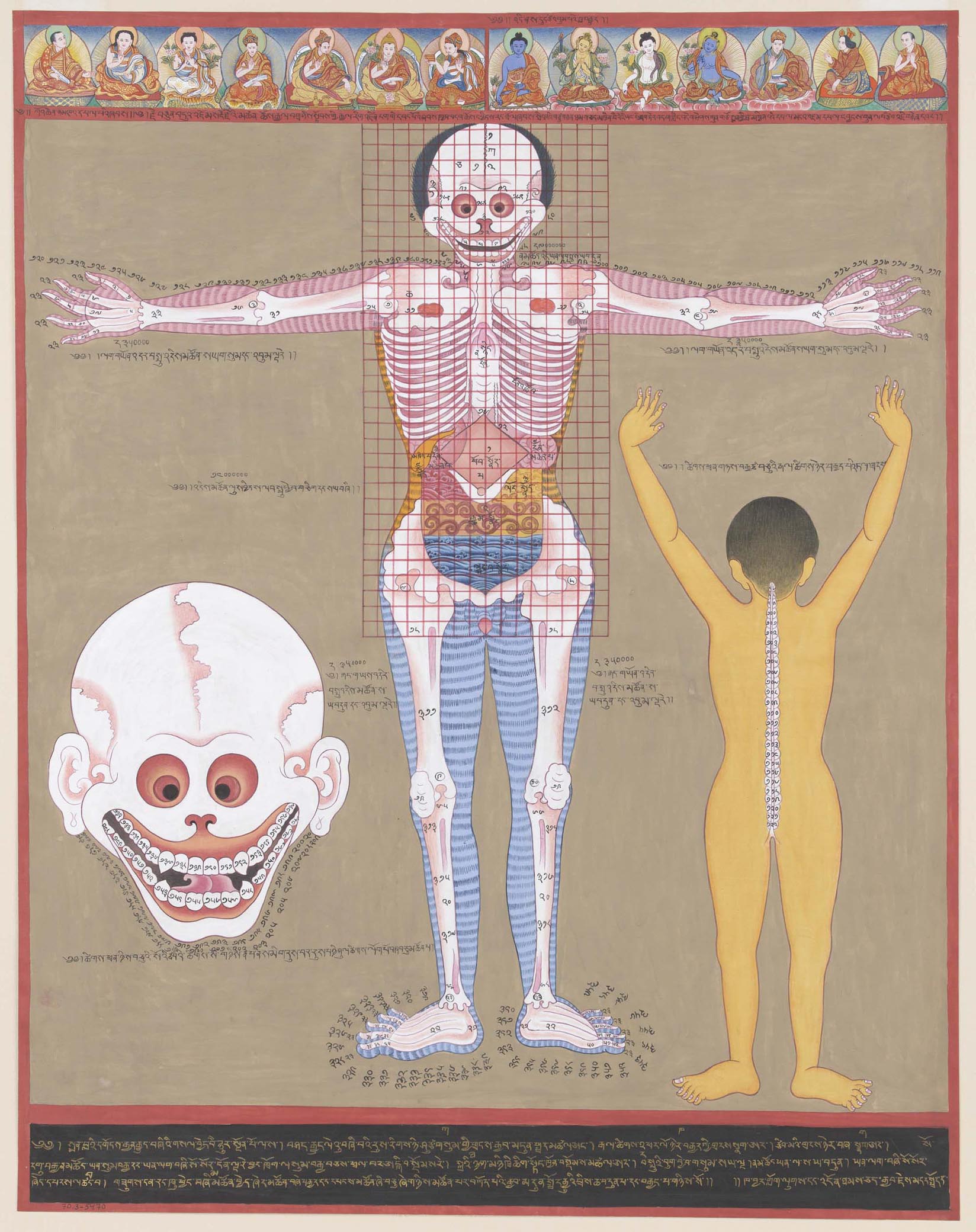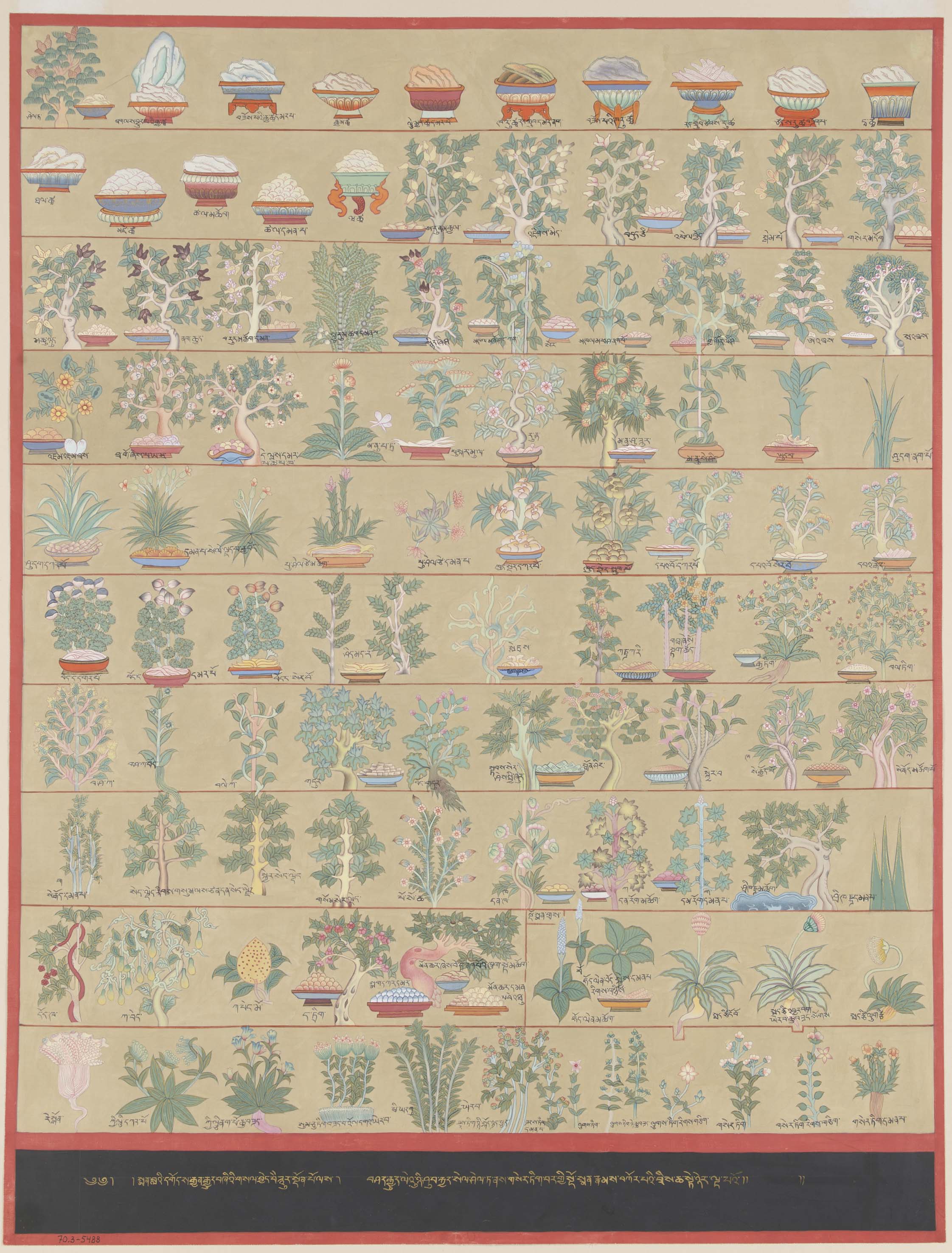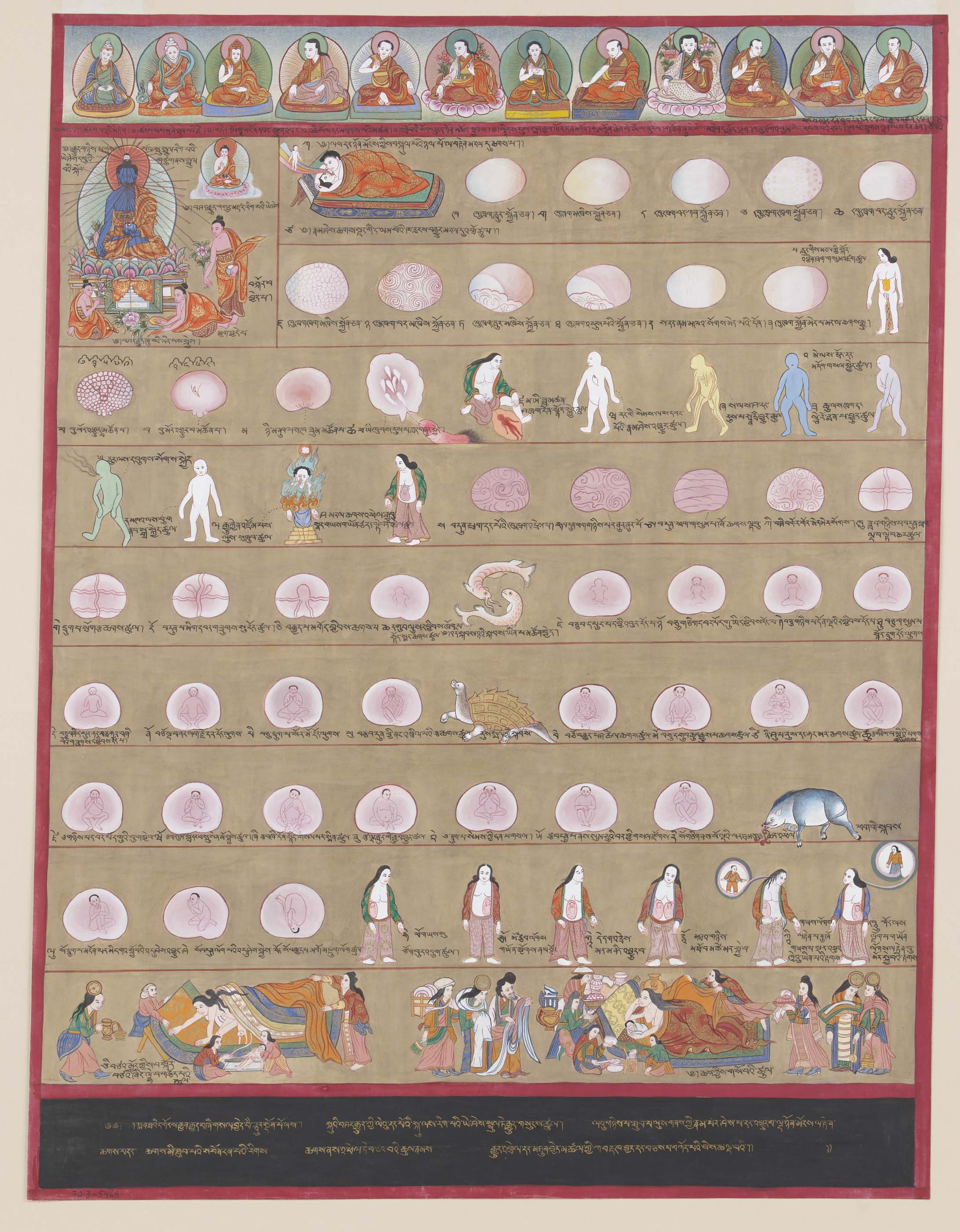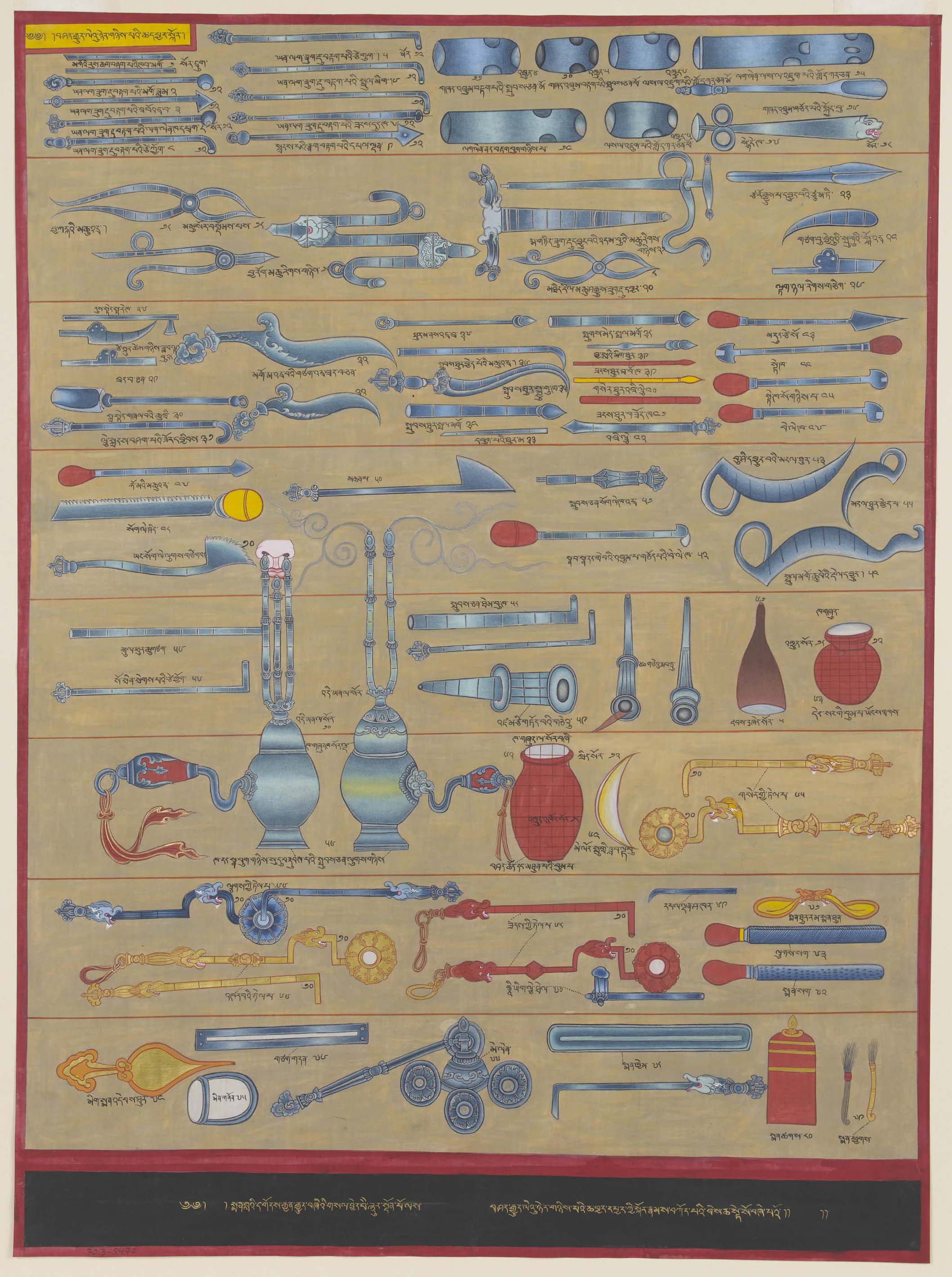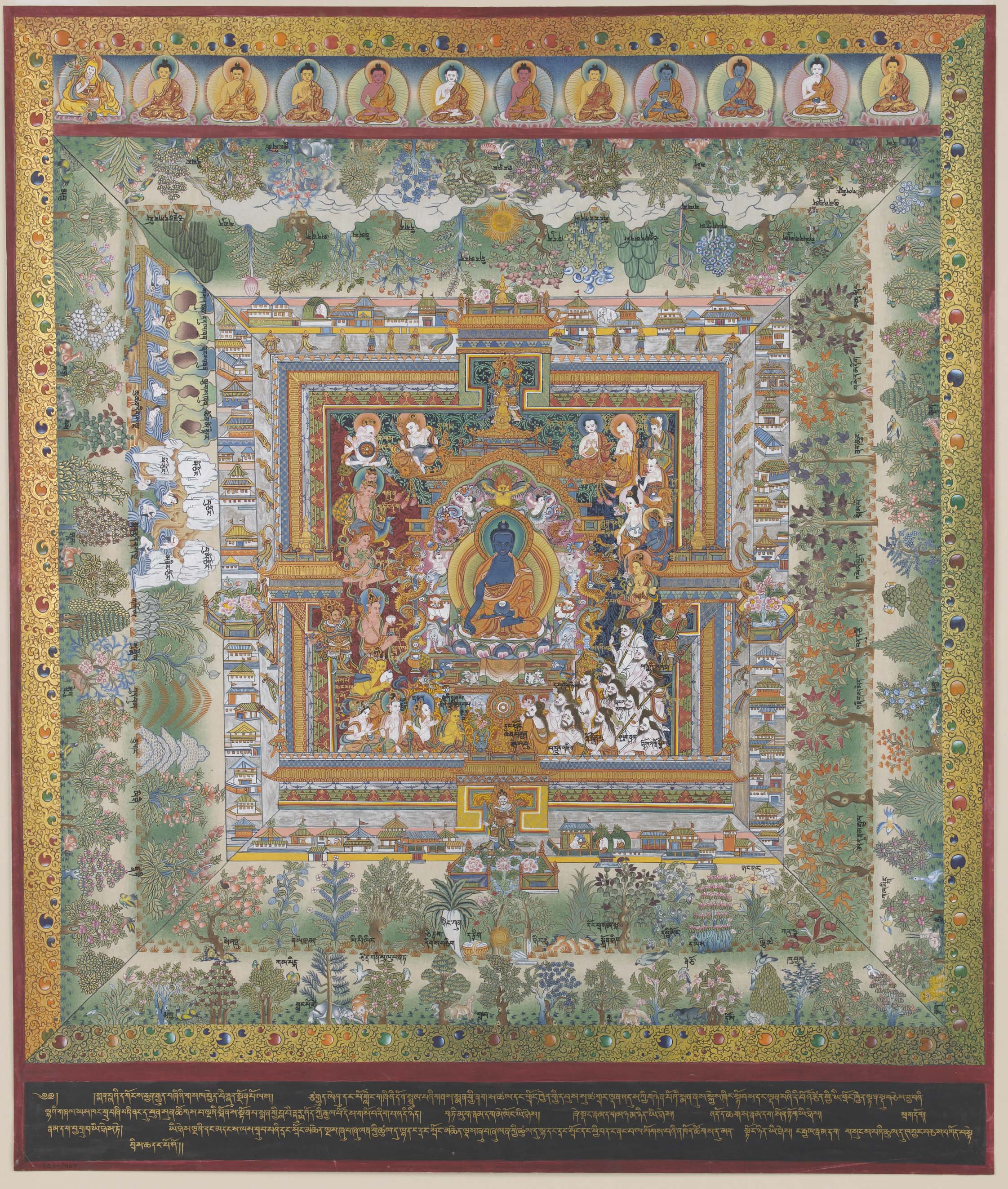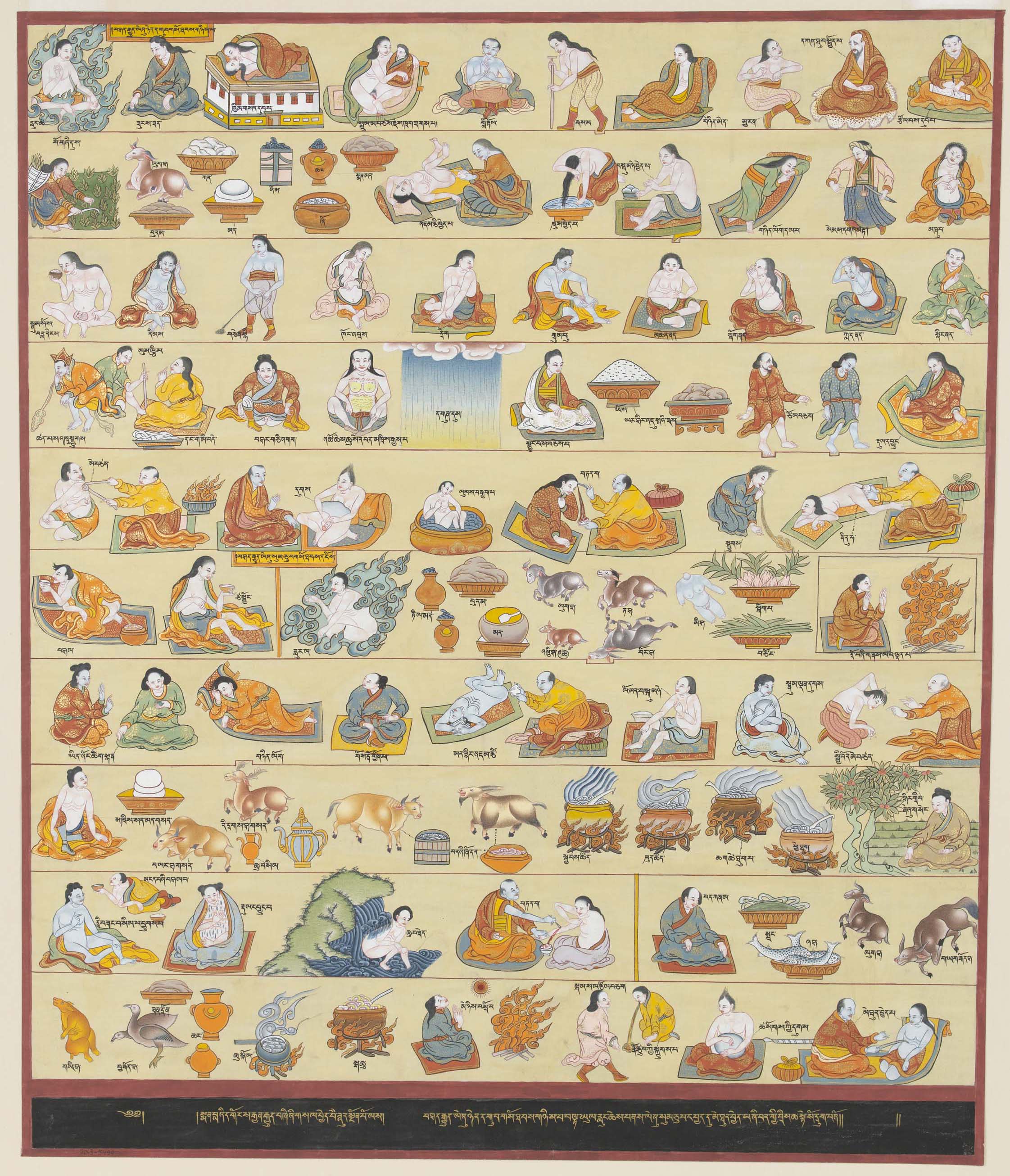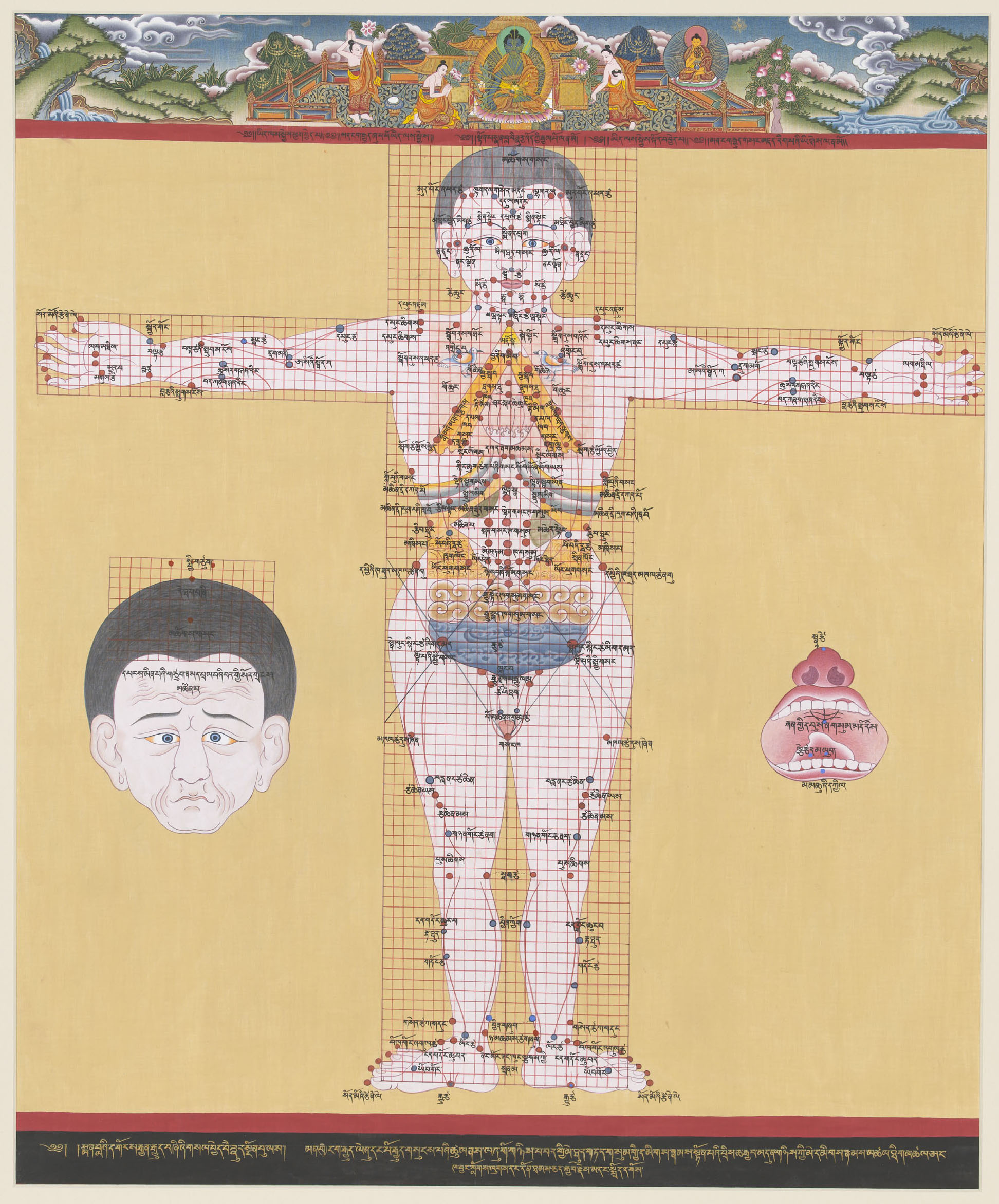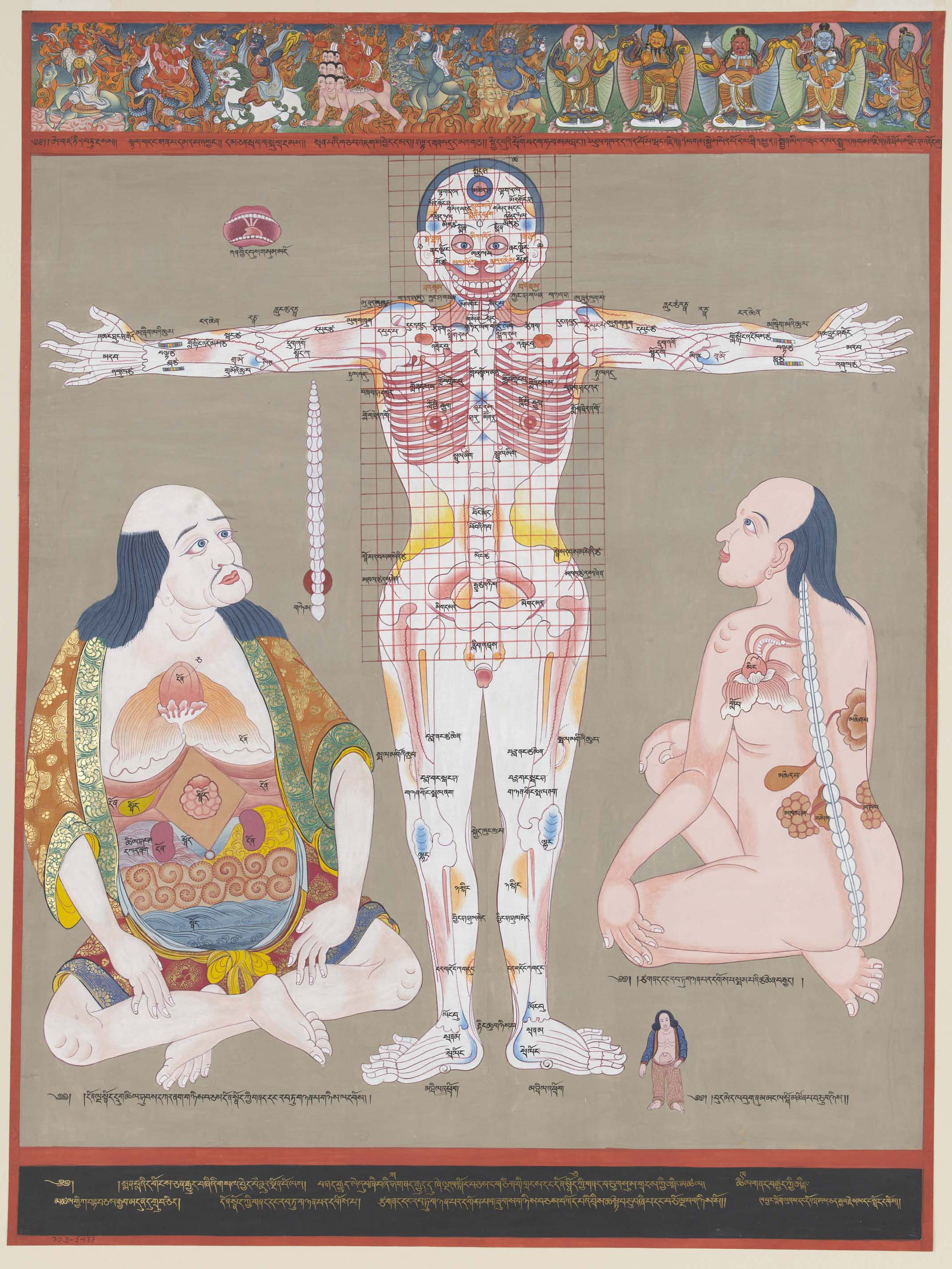17th Century Anatomical Drawings From Tibet
Tibet’s medical knowledge (and knowledge in general) came predominantly from India. This influx of info began in a slow but steady manner during the 11th and 12th centuries. In the 17th century, however, Tibet found itself getting ahead of the game as far as the medical sciences were concerned.
Medical monastic colleges sprung up and people began to take note of anatomy at large. The following images all come from a book called Blue Beryl that was mostly produced in and around the year 1687.
The Blue Beryl consists of 79 paintings (or tangkas meaning ‘rolled-up flat painting’) each one (that I’ve seen so far) is amazing. Amazing not just because of the relatively advanced look of them, but there’s also something pleasing about the marriage between their childlike quality and the beautifully adult subject matter.
The images mix folklore, medical practice and art. I reckon you’ll like them.
Classification of bones & the positioning of the internal organs
Herbal medications
Human embryology
Medical instruments
Medicine Buddha
Methods of treatment
Moxibustion, surgical, and bloodletting points
Moxibustion refers to the practice of burning the mugwort herb (moxa) and applying it to various parts of the body in order to improve circulation and treat chronic diseases. The moxibustion points are indicated by the red dots, the bloodletting points by the blue dots, and the surgical points are in yellow.
Tree of diagnosis
Anatomy of vulnerable points
If you’d like to see the images at a higher resolution you can drill down on them here.
MORE:
ELECTRON MICROSCOPY IMAGES OF EVERYDAY ITEMS


